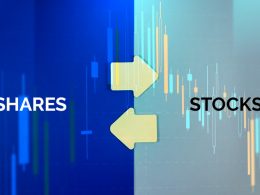Given the dismal productivity growth, wage growth in the wealthy world is very strong. There is excessive inflation.
These days, everyone is skeptical. A day after Bank of America issued the same prediction, Steven Blitz of the financial research firm TS Lombard stated on July 14 that he was now anticipating a recession this year in the greatest economy in the world. Another bank, Goldman Sachs, anticipates a decline in the eurozone’s GDP in the third and fourth quarters of the year. Google searches for “recession” among Americans are at an all-time high. Investors are pricing in interest rate reductions in 2023 by selling copper, a barometer for industrial health, and buying the dollar, a sign of anxiety.
A toxic amalgamation of forces has come together. America over-stimulated its economy in response to the COVID-19 epidemic, which led to inflation both inside and outside of its borders as consumers’ insatiable need for commodities disrupted global supply lines. The efforts made by China to eradicate covid made matters worse. Then, as a result of Russia’s invasion of Ukraine, commodity prices skyrocketed. Four-fifths of central banks worldwide have increased interest rates, on average by 1.5 percentage points, in reaction to the accompanying inflation. The Federal Reserve increased rates by three-quarters of a percent following a meeting that ended on July 27th. Fear about the effects of monetary tightening is at the heart of recession concerns. It is obvious that central banks must withdraw the proverbial punch bowl from the celebration. Given the lackluster productivity growth, wage growth is considered too strong in the developed world. There is too much inflation. However, there is a chance that increased prices will simply put an end to the celebration rather than make it less boisterous. History does not bode well for this. Rates in America have risen as much as they are predicted to this year three times since 1955: in 1973, 1979, and 1981. Within six months, there was a recession in each of the cases. Has the recession returned? Rich-world economies, which make up 60% of the global economy, have undoubtedly slowed since the euphoric mid-2021 period when COVID limits were abolished. A high-frequency business indicator of economic health based on several indicators is created by Goldman Sachs and is called the “current activity indicator.” Recently, the gauge has slowed. Manufacturers appear to be more pessimistic than at any point since the early stages of the pandemic, according to surveys of factory managers conducted by data providers Global in America and the eurozone. However, it appears too early to proclaim a recession—even if statisticians do, as some anticipate, report after we go to print on July 28th that the American economy shrank for the second consecutive quarter between April and June. According to one generalization, this would be considered a recession, but not necessarily by others. Despite the economy’s overall strength in the first quarter, several strange events caused the GDP to decline. Furthermore, it would be premature for the Fed’s tightening to have had an impact. To determine if the economy is actually in a recession, most economists use the National Bureau of Economic Research (NBER) in the United States. In making that determination, the business-cycle-dating committee takes into account measures other than the GDP and business indicators, such as employment rates and industrial output. Numerous signs still indicate growth. It is challenging to contest the onset of a recession. It is comforting to see how corporations are acting. The number of open positions in the market remains very close to a record high throughout wealthy economies. According to information from the recruiting website Indeed, they are more than twice as high in Australia as they were before the outbreak. In the case of unemployment, for every unemployed person in America, there are more than two available positions.
Because of this, the labor market is still tight. If you look closely, you can see some indications of increased unemployment in the Czech Republic. However, overall, the unemployment rate in the OECD group, which is made up of wealthy nations, is lower now than it was immediately before the pandemic. A more comprehensive business indicator of the strength of the labor market, the percentage of working-age persons who have a job is at an all-time high in half of the OECD countries. If history is any indication, these numbers are not consistent with an impending recession.







